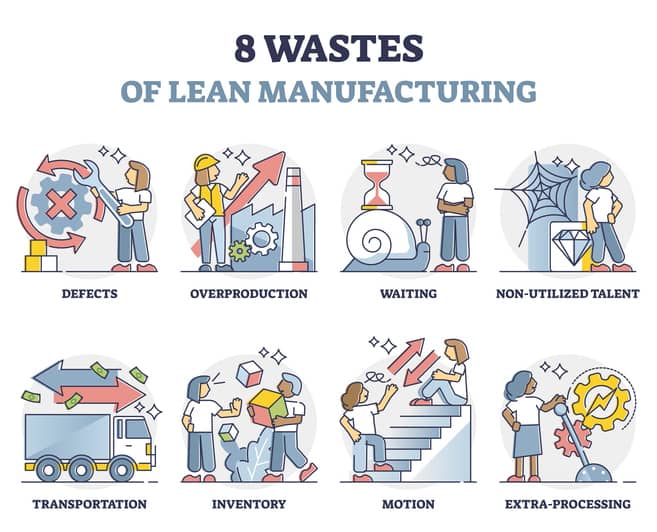The Toyota Production System, thanks to decades of success, is widely admired and imitated in the business world. At the heart of it is a dedication to eliminating waste and improving product quality.
In designing the system, Taiichi Ohno defined three areas of waste: mura, muri and muda. Understanding each is important for those wishing to develop expertise in Lean, as well as developing insight into how the Toyota Production System has achieved its success.
Here’s a closer look at the three.
Muda
This is the best-known of the three areas of waste. It contains the seven classic wastes as defined by Ohno. They are:
- Transportation – The inefficient movement of products and supplies from one place to another.
- Inventory – The storing of too many or too few products or supplies.
- Motion – Unneeded movements by workers or by machines in the process of creating a product.
- Waiting – An issue that arises when a project or production line is held up because a process has not been completed, creating a situation where both workers and equipment sit idle.
- Over-processing – This occurs when more work and time is put into creating a product than is required to meet customer expectations.
- Overproduction – This occurs when the number of products that are created outnumber consumer demand.
- Defects – Issues that cause a product or service to fall short of customer expectations.
Later, an eighth waste was added: underutilization of skills. This refers to a situation where the talents of individual employees are squandered.
Mura
According to Toyota, mura refers to inconsistent and uneven processes in an operation. They are the kind of issues that lead to the muda wastes listed above.
Mura typically happen when an organization has few or weak standards governing production of products or services – or in some cases, no guiding standards at all. This can result in issues such as over-processing, overproduction and defects in products.
An inconsistent and uneven process results in an inconsistent and uneven product or service that does not meet customer expectations. That flies in the face of the main goal of Lean, which is to have every activity focused on creating the best product for customers.
Solving mura issues requires putting into place the process improvement strategies that Lean offers, such as Just In Time Production, Heijunka and Takt Time.
Muri
Muri results from processes that are over-complicated or overly task workers. This can result when workers or equipment are used at more than 100% capacity for an extended period, a practice that is not sustainable.
Another issue that results in muri is not properly training employees. In other cases, employees might not have the proper set of tools to accomplish their job in the most efficient way. This can lead to many of the muda wastes listed above.
Muri also can lead to increased employee absenteeism, a lack of enthusiasm for the job and breakdowns of overtaxed equipment.
Lean tools and techniques can provide answers to muda, mura, and muri issues. By putting in the proper amount of planning, using Lean methods to find areas of waste, properly training employees and purchasing the right equipment, organizations can set themselves on a path to achieving the goal of becoming more efficient and effective.
This same drive for efficiency, effectiveness and including all employees in process improvement led to Toyota getting placed on the “World’s Most Admired” companies list by Fortune and Forbes’ “World’s Best Employers 2018” list.
Clearly, having leaders onboard who understand Lean methodology and practice it regularly can prove successful. Those who earn certification in Lean can help position themselves to take on these vital roles of responsibility.



